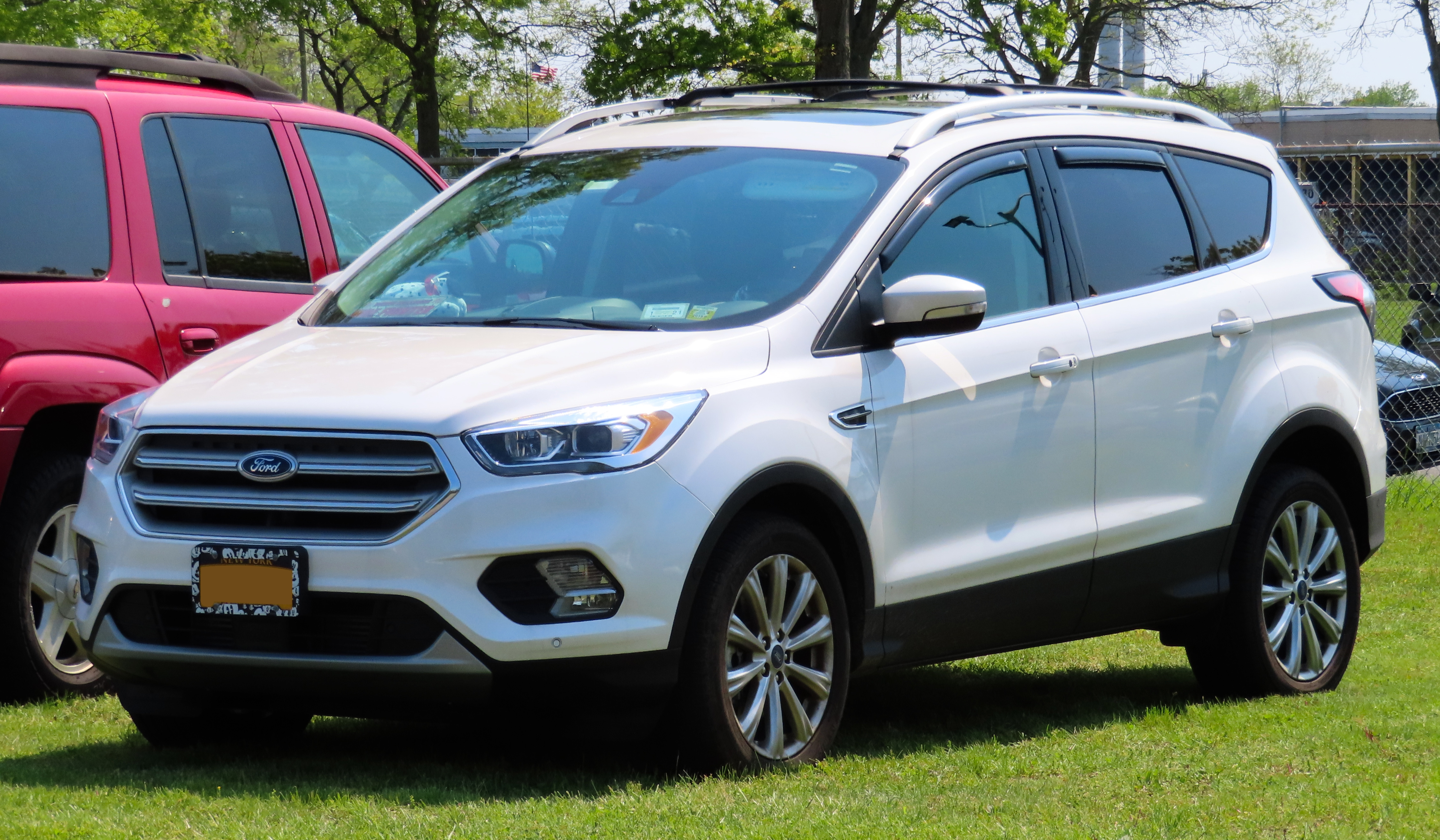
In the modern automotive landscape, our vehicles have transformed from simple mechanical marvels into rolling computers, intricate networks of wires, sensors, and control modules. This skyrocketing complexity, driven by advances in engine management, infotainment, and sophisticated driver-assistance systems, has undeniably pushed the boundaries of what a car can do. Yet, beneath the polished exterior and the whirring of the engine, a silent battle often rages within the car’s extensive wiring harness: the frustrating fight against what auto technicians affectionately (or perhaps exasperatingly) call ‘electrical gremlins.’
These ‘gremlins’ are not mythical creatures, but rather those vexing circumstances where the root cause of a wiring problem — regardless of the specific wiring or components involved — stubbornly escapes one’s grasp. For most mechanics, from hobbyists tinkering in their garage to seasoned professionals, these electrical imps remain as inevitable as they are memorable. They can turn even the most stoic auto repair technician into a sweating, swearing sailor, leading to intermittent dashboard warning lights, malfunctioning infotainment systems, sporadic engine stalling, or even more severe issues that compromise safety-critical systems.
For many drivers, understanding which vehicles possess truly bulletproof electrical systems versus those infamous for persistent electrical challenges isn’t just an academic exercise; it’s a crucial factor in the decision-making process when buying a car, especially when considering longevity beyond the first owner. Historically, some automakers have invested heavily in the robustness and durability of their electrical components, focusing on quality wiring harnesses, corrosion-resistant connectors, and fail-safe circuit designs. This article delves into this fascinating divide, beginning our journey by shining a well-deserved spotlight on five vehicles that consistently defy the gremlins, proving that complexity need not come at the cost of dependability.
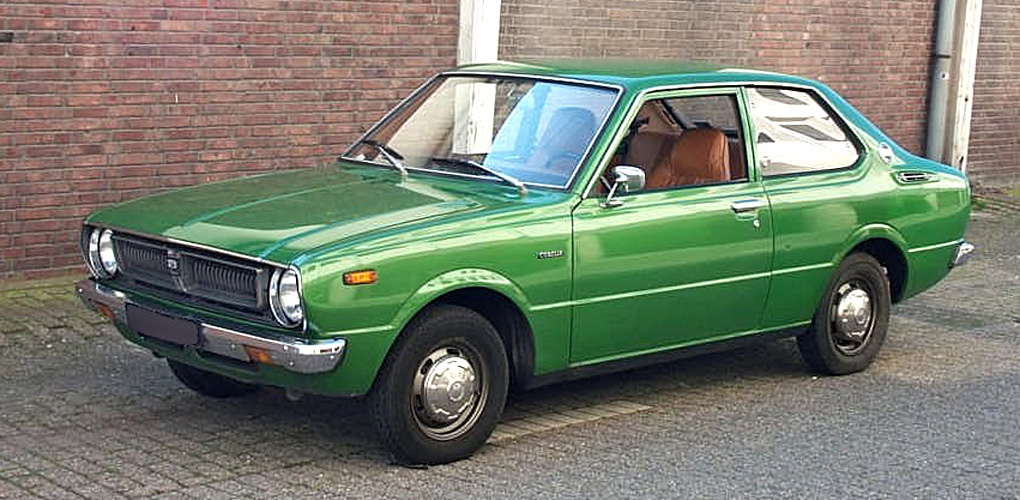
1. **Toyota Corolla**The Toyota Corolla has long been celebrated as a paragon of reliability, and a significant factor in this sterling reputation is its incredibly robust electrical system. Toyota’s approach to electrical design is refreshingly conservative, favoring simplicity, standardized components, and rigorous quality control at every stage of production. Unlike some manufacturers who might chase cutting-edge, yet unproven, electronics, Toyota meticulously refines and perfects its existing technologies before integrating them into mass production, a philosophy that drastically reduces the risk of early-life electrical failures.
Delving deeper, one finds that within the Corolla, wiring harnesses are not only meticulously organized but also expertly protected from common culprits of electrical degradation like abrasion and excessive heat. Toyota goes the extra mile by utilizing corrosion-resistant connectors and ensuring proper grounding, an often-overlooked yet absolutely critical aspect of long-term electrical durability. This attention to detail means that components such as power windows, the infotainment system, and vital engine management modules consistently operate without a hitch, even over extended periods of use.
Owners frequently report a near-absence of random electrical glitches, a testament to the Corolla’s engineering integrity. This reliability seamlessly extends to newer Corolla models as well, which have successfully incorporated advanced safety and driver-assistance electronics without compromising the overall system’s integrity. It’s a prime example of how thoughtful integration of modern tech can coexist with unwavering dependability.
Furthermore, the Corolla’s electrical system benefits immensely from Toyota’s extensive global feedback loop. Any minor issues discovered in early production batches are swiftly addressed and incorporated into later revisions, creating a continuous improvement cycle that effectively irons out potential electrical vulnerabilities. This proactive approach, coupled with dealerships well-versed in diagnosing and repairing electrical components, ensures prompt and effective service, though such interventions are, thankfully, a rare occurrence for Corolla owners.
From a purely practical standpoint, this bulletproof electrical reliability translates directly into a lower total cost of ownership. Fewer electrical faults mean fewer unplanned visits to the repair shop and less downtime, making the Corolla a perennial favorite among both fleet operators and daily commuters who simply need a car that works, day in and day out. In a world where vehicle electronics can often feel like a gamble, the Corolla stands as a shining example of how careful engineering and a commitment to restraint can deliver truly durable, hassle-free electrical performance for years, and owners, to come.
Car Model Information: 2023 Toyota Corolla LE
Name: Toyota Corolla
Caption: Twelfth generation model (2020, hatchback)
Manufacturer: Toyota
Aka: unbulleted list
Production: November 1966 – present
Class: unbulleted list
Predecessor: Toyota Publica
Categories: 1970s cars, 1980s cars, 1990s cars, 2000s cars, 2010s cars
Summary: The Toyota Corolla (Japanese: トヨタ・カローラ, Hepburn: Toyota Karōra) is a series of compact cars (formerly subcompact) manufactured and marketed globally by the Japanese automaker Toyota Motor Corporation. Introduced in 1966, the Corolla has been the world’s best-selling automobile of all time since 1997, when it surpassed the Volkswagen Beetle. Toyota reached the milestone of 50 million Corollas sold over twelve generations in 2021.
The name Corolla is part of Toyota’s naming tradition of using names derived from the Toyota Crown for sedans, with “corolla” Latin for “small crown”. The Corolla has always been exclusive in Japan to Toyota Corolla Store locations, and manufactured in Japan with a twin, called the Toyota Sprinter until 2000. From 2006 to 2018 in Japan and much of the world, and from 2018 to 2020 in Taiwan, the hatchback companion had been called the Toyota Auris.
Early models were mostly rear-wheel drive, while later models have been front-wheel drive. Four-wheel drive versions have also been produced, and it has undergone several major redesigns. The Corolla’s traditional competitors have been the Nissan Sunny, introduced the same year as the Corolla in Japan and the later Nissan Sentra, Subaru Leone, Honda Civic and Mitsubishi Lancer. The Corolla’s chassis designation code is “E”, as described in Toyota’s chassis and engine codes.
Get more information about: Toyota Corolla
Buying a high-performing used car >>>
Brand: Toyota Model: Corolla
Price: $21,090 Mileage: 53,389 mi.
Read more about: Seriously, What Happened? 13 Legendary Muscle Cars Automakers Just Don’t Build Anymore, But Absolutely Should!
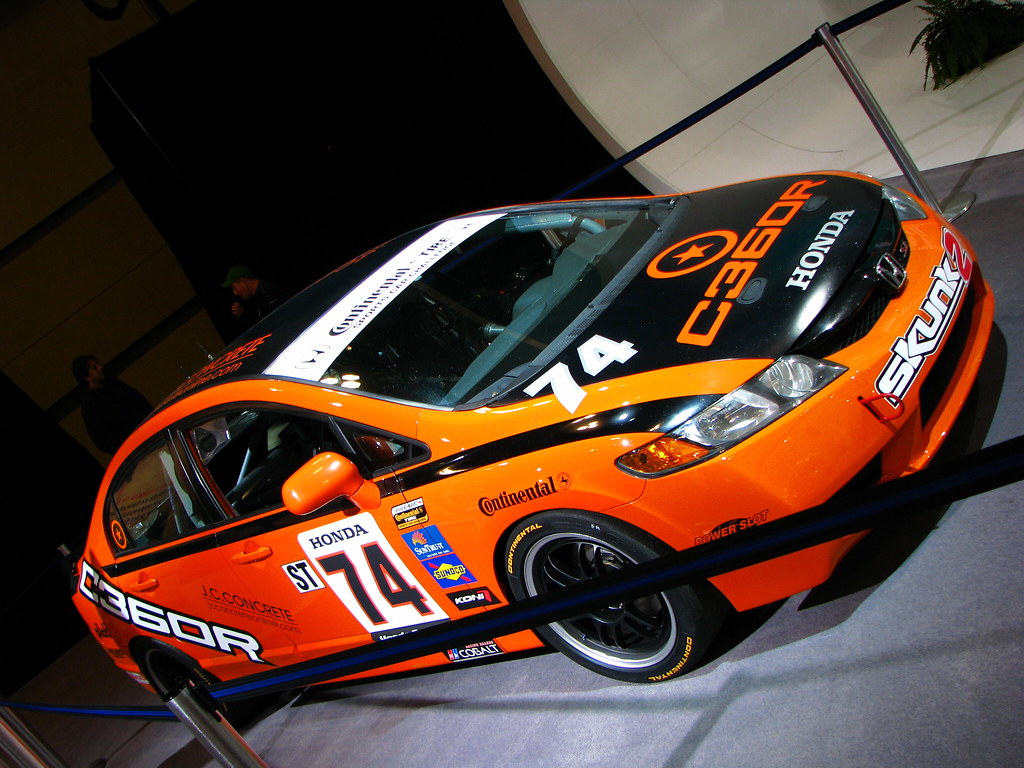
2. **Honda Civic**Following closely in the footsteps of its fellow Japanese automotive titan, the Honda Civic stands as another exceptional model with an electrical system renowned for its outstanding durability and elegant simplicity. Much like Toyota, Honda adopts a pragmatic, no-nonsense approach to its vehicle electronics, prioritizing reliability through the use of proven technology and robust component quality. This strategy consistently triumphs over the temptation for flashy, unproven innovations that might otherwise compromise long-term system stability.
Honda’s unwavering commitment to reliability is vividly reflected in the Civic’s impressively long production run and the consistently positive feedback from owners regarding its electrical integrity. The electrical components within the Civic, encompassing everything from the ignition systems and various sensors to the critical control modules, are designed to be straightforward. Crucially, they are also exceptionally well-protected from environmental adversaries like moisture and constant vibration, elements that can wreak havoc on lesser electrical setups.
Honda engineers design their wiring harnesses not just for performance, but also with redundancy and ease of replacement firmly in mind. This foresight significantly simplifies repairs and upgrades should they ever become necessary, a welcome relief for technicians and owners alike. Moreover, the Civic’s electrical architecture hasn’t undergone radical, untested shifts; instead, it has evolved gradually over the years. Each new generation thoughtfully incorporates feedback from previous models, leading to a continual process of refinement and, predictably, far fewer unwelcome surprises for owners.
Owners of the Honda Civic frequently highlight the near-absence of random electrical glitches as a key factor contributing to its legendary longevity and its impressive resale value. Even with the inevitable increase in complexity seen in the infotainment and safety electronics of more recent Civic models, Honda maintains a meticulous balance that steadfastly prioritizes long-term system integrity above all else. This thoughtful design philosophy ensures that even if an electrical issue does arise, it tends to be isolated and readily fixable, rather than indicative of systemic, recurring problems.
Another absolutely crucial element contributing to the Civic’s bulletproof electrical reputation is Honda’s notoriously rigorous testing protocols. The company puts its vehicles through extensive paces under extreme conditions, painstakingly verifying that every wire, connector, and module can withstand severe temperature swings, prolonged moisture exposure, and constant vibration—all common stressors that can instigate electrical faults. The resounding result is an electrical system in the Civic that remains dependably robust across diverse climates and driving conditions, firmly cementing its status as a worldwide favorite for anyone seeking reliability.
Car Model Information: 2016 Honda Civic EX-L
Caption: 2024 Honda Civic liftback
Manufacturer: Honda
Aka: ubl
Production: 1972–present
Class: Subcompact car
BodyStyle: fastback,Sedan (automobile)
Layout: Front-engine, front-wheel-drive layout,Front-engine, four-wheel-drive layout
Predecessor: Honda N600,Honda Z600
Categories: 1980s cars, 1990s cars, 2000s cars, 2010s cars, 2020s cars
Summary: The Honda Civic (Japanese: ホンダ・シビック, Hepburn: Honda Shibikku) is a series of automobiles manufactured by Honda since 1972. As of 2023, the Civic is positioned between the Honda Fit/City and Honda Accord in Honda’s global passenger car line-up. It is one of the best-selling automobiles in history, with over 27 million units sold through 2021.
The first-generation Civic was introduced in July 1972 as a two-door fastback sedan, followed by a three-door hatchback that September. With a 1,169 cc transverse engine and front-wheel drive, the car provided good interior space despite its small overall dimensions. Initially gaining a reputation for being fuel-efficient, reliable and environmentally friendly, later iterations have become known for performance and sportiness, especially the Civic Si, SiR, and Type R versions. It is currently in its eleventh generation, which has been produced since 2021.
The Civic has often been rebadged for international markets, and it served as the basis for the Honda CR-X, the Honda CR-X del Sol, the Concerto, the first generation Prelude, the Civic Shuttle (which later became the Orthia) and the CR-V (which in turn was used as the basis for the Honda FR-V).
Get more information about: Honda Civic
Buying a high-performing used car >>>
Brand: Honda Model: Civic
Price: $14,685 Mileage: 148,116 mi.
Read more about: Navigating the Nightmare: The 12 Worst States for Modified Car Enthusiasts
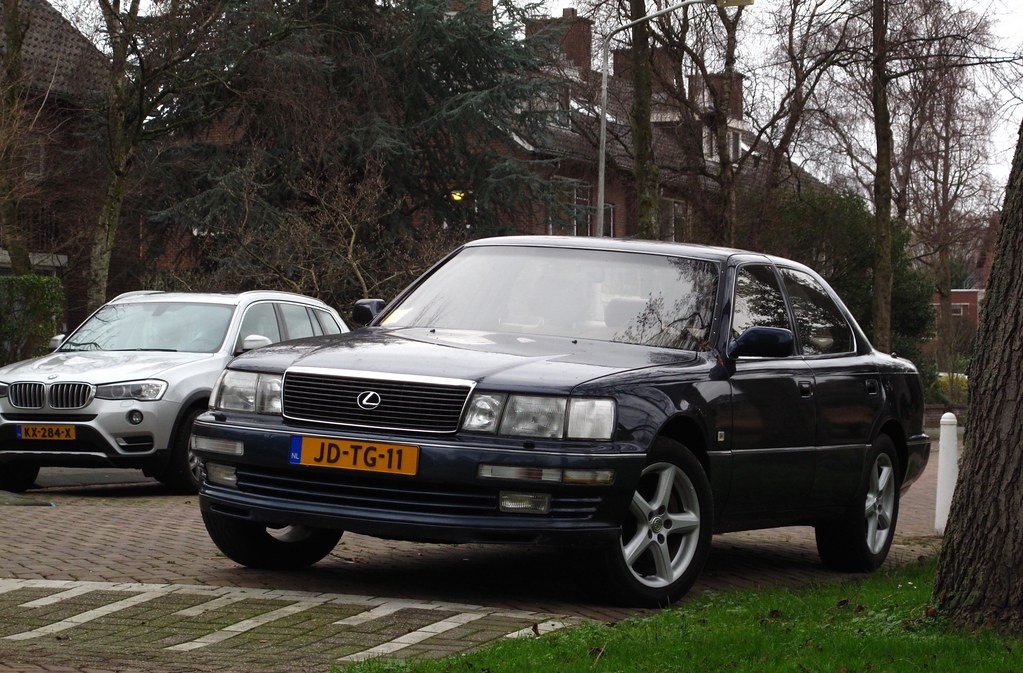
3. **Lexus LS**As the flagship vehicle of Toyota’s luxury division, the Lexus LS presents a compelling case study in how to achieve high-end electrical system reliability without sacrificing sophistication. While luxury cars, by their very nature, often grapple with complexity-related electrical problems due to their extensive electronics and feature sets, Lexus has managed to maintain an enviable track record of electrical durability with the LS. This remarkable achievement is not born of luck, but rather from meticulous engineering, the use of premium-grade components, and an exhaustive, multi-layered quality assurance process.
The electrical system within the Lexus LS is a marvel of integration, seamlessly blending a broad array of cutting-edge technologies. This includes everything from advanced infotainment and navigation systems that could rival a home theater, to intricate climate control mechanisms and a comprehensive suite of safety electronics. Despite this inherently high level of complexity, Lexus engineers have shrewdly emphasized redundancy and a modular design approach. This smart design allows individual systems to operate with a degree of independence, significantly reducing the risk of catastrophic cascading failures that often plague less meticulously designed luxury vehicles.
Owner feedback and independent reliability studies consistently position the Lexus LS as a benchmark for electrical system robustness among its luxury sedan peers. Lexus’s celebrated commitment to superior fit and finish extends deep into the vehicle’s electrical infrastructure, meaning that the wiring and connectors are inherently less prone to corrosion or damage compared to those found in many comparable vehicles from certain European rivals. Furthermore, the brand’s proactive approach to software updates and swift, efficient recalls helps to address any nascent electrical issues before they can escalate into widespread, frustrating problems for owners.
In practical terms, the Lexus LS’s bulletproof electrical system translates directly into exceptionally high owner satisfaction and notably lower maintenance costs over the vehicle’s long lifespan. This ingrained reliability empowers owners to fully immerse themselves in and enjoy the LS’s technological sophistication and opulent features without the typical headaches that are often, unfortunately, associated with complex luxury car electronics. It stands as a powerful testament to the fact that intricate complexity, when managed with unparalleled care and engineering excellence, absolutely does not have to come at the unacceptable cost of dependable, trouble-free motoring.
Car Model Information: 2000 Lexus LS 400 LS
Name: Lexus LS
Caption: 2019 Lexus LS 500 AWD (VXFA55, US)
Manufacturer: Toyota
Aka: Toyota Celsior (Japan, 1989–2006)
Production: May 1989 – present
ModelYears: 1990–present
Assembly: Tahara, Aichi
Class: Full-size,luxury car
BodyStyle: Sedan (automobile)
Layout: unbulleted list
Categories: 1990s cars, 2000s cars, 2010s cars, 2020s cars, All-wheel-drive vehicles
Summary: The Lexus LS (Japanese: レクサス・LS, Hepburn: Rekusasu LS) is a series of full-size luxury sedans that have served as the flagship model of Lexus, the luxury division of Toyota, since 1989. For the first four generations, all LS models featured V8 engines and were predominantly rear-wheel-drive. In the fourth generation, Lexus offered all-wheel-drive, hybrid, and long-wheelbase variants. The fifth generation changed to using a V6 engine with no V8 option, and only one length was offered.
As the first model developed by Lexus, the LS 400 debuted in January 1989 with the second generation debuting in November 1994. The LS 430 debuted in January 2000 and the LS 460/LS 460 L series in 2006. A domestic-market version of the LS 400 and LS 430, badged as the Toyota Celsior (Japanese: トヨタ・セルシオ, Hepburn: Toyota Serushio), was sold in Japan until the Lexus marque was introduced there in 2006. In 2006 (for the 2007 model year), the fourth generation LS 460 debuted the first production eight-speed automatic transmission and an automatic parking system. In 2007, V8 hybrid powertrains were introduced on the LS 600h/LS 600h L sedans.
Development of the LS began in 1983 as the F1 project, the code name for a secret flagship sedan. At the time, Toyota’s two existing flagship models were the Crown and Century models – both of which catered exclusively for the Japanese market and had little global appeal that could compete with international luxury brands such as Mercedes-Benz, BMW and Jaguar. The resulting sedan followed an extended five-year design process at a cost of over US$1 billion and premiered with a new V8 engine and numerous luxury features. The Lexus LS was intended from its inception for export markets, and the Lexus division was formed to market and service the vehicle internationally. The original LS 400 debuted to strong sales and was largely responsible for the successful launch of the Lexus marque.
Since the start of production, each generation of the Lexus LS has been manufactured in the Japanese city of Tahara, Aichi. The name “LS” stands for “Luxury Sedan”, although some Lexus importers have preferred to define it as “Luxury Saloon”. The name “Celsior” is taken from Latin word “celsus”, meaning “lofty” or “elevated”.
Get more information about: Lexus LS
Buying a high-performing used car >>>
Brand: Lexus Model: LS
Price: $12,995 Mileage: 112,967 mi.
Read more about: Seriously, What Happened? The Wild Ride of Engine Downsizing and Why Your Car’s Heart Just Isn’t What It Used To Be
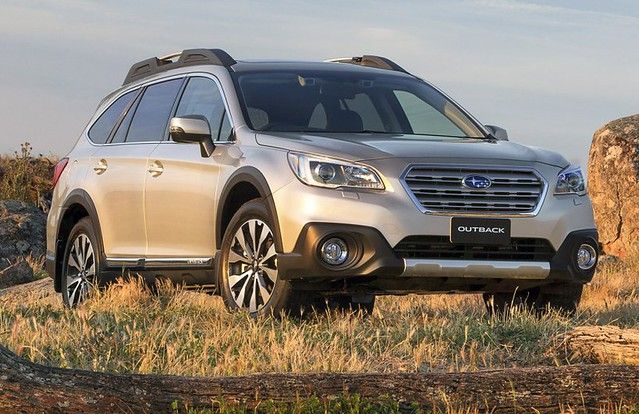
4. **Subaru Outback**Subaru’s Outback is a vehicle widely recognized not only for its rugged versatility and adventurous spirit but also, crucially, for its consistently reliable electrical systems. These systems are specifically engineered to endure some of the most challenging conditions imaginable, from harsh weather extremes to demanding off-road excursions. The brand’s deeply ingrained focus on durability is explicitly reflected in every aspect of the Outback’s wiring and electronics, which are robustly designed to withstand constant exposure to moisture, abrasive dirt, and relentless vibration – all formidable challenges for vehicles expected to perform flawlessly in such demanding environments.
Subaru employs an exhaustive regimen of rigorous testing for all its electrical components, including extensive environmental simulations. These simulations are specifically designed to verify unparalleled resistance to water ingress and corrosion, factors that are absolutely critical for a vehicle often driven in challenging conditions. This meticulous approach is paramount, as even minor electrical faults in vital systems like the sophisticated all-wheel-drive controls, essential lighting, or critical engine management functions can severely compromise both safety and overall drivability, leaving owners stranded or vulnerable.
The Outback’s wiring harnesses are not merely installed; they are meticulously protected with robust, heavy-duty insulation materials and feature precisely sealed connectors. This comprehensive protection dramatically reduces the likelihood of damaging electrical shorts or debilitating failures that can be caused by environmental exposure. Moreover, Subaru’s electrical architecture within the Outback achieves a masterful balance: it incorporates modern conveniences and advanced features without succumbing to unnecessary complexity that can, ironically, lead to systemic reliability problems. The brand’s strategic use of proven sensor technologies and meticulously designed control modules significantly enhances overall system stability and makes any potential repairs far more manageable for technicians.
Owners frequently attest to their Outbacks enduring long-term ownership with remarkably minimal electrical issues, even when consistently pushed through challenging conditions such as deep snow, thick mud, and heavy, prolonged rain. This unwavering reliability plays a pivotal role in solidifying Subaru’s well-earned reputation for building tough, inherently dependable vehicles. Consequently, it makes the Outback a perennial favorite among outdoor enthusiasts, active families, and anyone who simply requires consistent, unwavering electrical performance in virtually any situation, ensuring peace of mind no matter where the road (or lack thereof) takes them.
Car Model Information: 2009 Subaru Impreza Outback Sport
Name: Subaru Outback
Caption: 2023 Subaru Outback Premium
Manufacturer: Subaru
Production: 1994–present
ModelYears: 1995–present
Assembly: Ota, Gunma
Aka: Subaru Legacy
Class: Mid-size car
BodyStyle: station wagon
Categories: All Wikipedia articles written in American English, All articles with unsourced statements, Articles containing Japanese-language text, Articles with short description, Articles with unsourced statements from April 2012
Summary: The Subaru Outback is an automotive nameplate used by the Japanese automaker Subaru for two different themed vehicles: a Legacy-derived station wagon, the Outback (1994–present, also sold as Legacy Outback (Japanese: スバル・レガシィアウトバック, Hepburn: Subaru Regashi Autobakku) in some markets), and an Impreza-derived off-road themed hatchback, the Outback Sport (1994–2011).
Most versions of the Outback wagon and Outback Sport have had all-wheel drive as standard equipment.
Get more information about: Subaru Outback
Buying a high-performing used car >>>
Brand: Subaru Model: Outback
Price: $6,495 Mileage: 126,643 mi.
Read more about: Unearthing 15 Unsung 90s Sedans: Reliable Transport Gems for Today’s Commuters

5. **Ford F-150 (Recent Models)**In the fiercely competitive pickup truck segment, the Ford F-150 stands out prominently, not just for its legendary ruggedness and unparalleled capability, but equally for its exceptionally strong and resilient electrical systems, particularly in its latest generations. Ford has demonstrably recognized the paramount importance of a robust electrical architecture, especially given the F-150’s role as the quintessential American workhorse vehicle. These trucks are frequently subjected to harsh environmental conditions, incredibly heavy usage, and are expected to seamlessly integrate an increasingly sophisticated array of electronics, all while maintaining peak performance.
The recent F-150 models showcase a brilliantly conceived modular electrical system, a design choice that significantly simplifies diagnostics, streamlines repairs, and makes future upgrades far more accessible. The wiring harnesses within these trucks are engineered using only high-quality materials, chosen specifically for their superior resistance to abrasion, intense heat, and corrosive elements that are common in demanding work environments. Additionally, Ford employs advanced electronic control units (ECUs) that manage the truck’s myriad systems with remarkable efficiency and unwavering reliability, drastically minimizing the chances of random faults or outright system failures.
Ford’s commitment to real-world durability is further underscored by its extensive field testing for the F-150. This rigorous testing regimen includes prolonged exposure to extreme weather conditions and simulations of real-world operational scenarios that push the truck to its limits. These incredibly high standards collectively ensure that the electrical systems in the F-150 are truly built to last, providing unwavering performance even under the toughest worksite conditions or during challenging off-road adventures. Moreover, Ford provides incredibly detailed maintenance guidelines and sophisticated diagnostic tools, facilitating the early detection and proactive resolution of any potential electrical issues before they have a chance to escalate into major problems.
This powerful combination of rugged, purposeful design, cutting-edge yet proven advanced electronics, and exhaustive, real-world testing has deservedly earned the F-150 an enviable reputation for bulletproof electrical performance within the demanding pickup truck market. For owners who rely on their trucks for daily work, crucial business operations, or cherished recreational activities, this inherent reliability is absolutely invaluable. It directly translates into significantly reduced downtime, lower repair costs, and, perhaps most importantly, an enhanced sense of confidence in the vehicle’s consistent capability and readiness to tackle any task thrown its way, year after dependable year. From infotainment to critical engine functions, the F-150’s electrical backbone is truly built to endure, ensuring that the truck remains a steadfast companion for the long haul.
Now that we’ve highlighted the champions of electrical reliability, it’s time to shift gears and navigate the more treacherous terrain of vehicles where electrical systems can become a recurring nightmare. For every car that defies the gremlins, there’s another that seems to attract them like moths to a flickering dashboard light. These are the models that have, for various reasons, earned a reputation for their persistent electrical challenges, turning routine drives into potential troubleshooting sessions and often leading to exasperated sighs from their owners (and their mechanics). Understanding their pitfalls is just as crucial as recognizing the exemplars of dependability.
This journey into the land of electrical headaches isn’t meant to demonize any particular brand, but rather to arm you with the practical insights that Jalopnik readers crave. It’s about being informed, about understanding the engineering choices—or missteps—that can lead to widespread frustration. From aging wiring harnesses to ambitious but underdeveloped electronic systems, these vehicles illustrate the delicate balance between innovation and reliability, a balance that, unfortunately, wasn’t always struck perfectly. Brace yourself, because here are five cars infamous for their electrical ‘gremlins,’ the kind that can make you wish for the simpler days of mechanical woes.
Car Model Information: 2014 Ford F-150 XLT
Name: Ford F-Series
Caption: 2022 Ford F-150 Lariat Luxury
Manufacturer: Ford Motor Company
Aka: Ford Lobo (Mexico, 1992–present)
Production: 1948–present
Class: Pickup truck#Full-size pickup truck
Layout: Front-engine, rear-wheel-drive layout,rear-wheel drive
Predecessor: 1941 Ford
Categories: All-wheel-drive vehicles, All Wikipedia articles written in American English, All articles that may contain original research, All articles with unsourced statements, Articles that may contain original research from September 2020
Summary: The Ford F-Series is a series of light-duty trucks marketed and manufactured by the Ford Motor Company since model year 1948 as a range of full-sized pickup trucks — positioned between Ford’s Ranger and Super Duty pickup trucks. Alongside the F-150 (introduced in 1975), the F-Series also includes the Super Duty series (introduced in 1999), which includes the heavier-duty F-250 through F-450 pickups, F-450/F-550 chassis cabs, and F-600/F-650/F-750 Class 6–8 commercial trucks.
The most popular version of the model line is the F-150 pickup truck, currently in its fourteenth generation (introduced for the 2021 model year). From 1953 to 1983, the entry-level F-Series pickup was the 1⁄2 ton F-100. Starting in 1984, the F-150 became the entry-level. The F-150 has a long-running high-performance off-road trim level introduced for 2010, the (SVT) Raptor currently consisting of three generations. Production of the F-150 SVT Raptor ended in 2014 and was succeeded in 2017 by a new F-150 Raptor, which is based on the thirteenth and fourteenth generation F-150.
The F-Series trucks have been developed into a wide range of design configurations. Alongside medium-duty trucks and “Big Job” conventional trucks (the forerunners of the Ford L-series), the model line has been marketed as a chassis-cab truck and a panel van (a predecessor of the Ford E-Series). The F-Series has served as the platform for various full-sized Ford SUVs, including the Ford Bronco, Ford Expedition/Lincoln Navigator, and Ford Excursion. The F-Series has been marketed by its three North American brands: by Mercury as the M-Series (in Canada from 1948 to 1968), and by Lincoln in the 2000s, as the Blackwood and the later Mark LT (2010s for the latter in Mexico only).
Since 1977, the F-Series has remained the best-selling pickup truck line in the United States; it has been the best-selling vehicle overall since 1981. The F-Series has been the best-selling truck in Canada for over 50 years. As of the 2018 model year, the F-Series generated $41 billion (~$50.3 billion in 2024) in annual revenue for Ford. By January 2022, the F-Series models have sold over 40 million units. Currently, Ford manufactures the F-Series in four facilities in the United States.
Get more information about: Ford F-Series
Buying a high-performing used car >>>
Brand: Ford Model: F-150
Price: $17,745 Mileage: 131,097 mi.
Read more about: Understanding Water Damage: The 10 Vehicles That Survive Floods and the Ones That Fail in Light Rain, Causing Costly Electrical Gremlins

6. **Jeep Grand Cherokee (Early 2000s Models)**The early 2000s Jeep Grand Cherokee, specifically the 1999-2004 models, has unfortunately carved out a rather uncomfortable niche for itself in the automotive reliability hall of shame, particularly concerning its electrical systems. These rugged SUVs, while capable off-road, often presented their owners with a frustrating array of electrical quirks that ranged from mere annoyances to serious safety concerns. It was a time when Jeep’s ambitions seemed to outpace the execution of their internal wiring and component choices, leading to a cascade of problems.
The gremlins in these Grand Cherokees were widespread. Owners often grappled with erratic dashboard gauges that seemed to have a mind of their own, persistent and unexplained warning lights, and a maddening inconsistency from critical systems like power windows and door locks. The consensus among technicians points largely to rapidly aging wiring harnesses and a design that simply didn’t stand up to the test of time or environmental exposure. Corrosion, that silent killer of electrical connections, became an all too familiar foe for these vehicles.
Perhaps the most notorious culprit was the Body Control Module (BCM). This central nervous system of the vehicle, responsible for orchestrating a multitude of electronic functions, proved to be a weak link. A failing BCM could trigger a bewildering array of seemingly unrelated issues, from a dancing instrument cluster to intermittent operation of essential components, leaving owners and mechanics scratching their heads. Critics pointed to Jeep’s wiring design, which offered insufficient protection against moisture ingress, practically inviting water to wreak havoc on delicate electrical circuits.
Beyond the BCM, the ignition switch and starter wiring were frequent points of contention. Poor routing and inadequate insulation often led to shorts or intermittent connectivity, manifesting as frustrating no-start conditions or, even more alarmingly, sudden engine stalls while driving. This combination of complex sensor networks and control modules, without the accompanying robust design, transformed diagnosis and repair into an expensive, protracted battle, a true testament to the vexing nature of these particular gremlins.
While Jeep has undoubtedly made strides in later models, the early 2000s Grand Cherokee remains a powerful reminder of how electrical shortcomings can overshadow a vehicle’s other strengths. For anyone eyeing these models on the used market, a thorough pre-purchase inspection focusing heavily on electrical integrity isn’t just recommended, it’s virtually mandatory, unless you enjoy throwing parts (and money) at phantom problems.
Car Model Information: 2019 Lexus GX 460 Premium
Name: Jeep Grand Cherokee
Manufacturer: Jeep
Production: 1992–present
ModelYears: 1993–present
Class: unbulleted list
BodyStyle: sport utility vehicle
Layout: unbulleted list
Chassis: Vehicle_frame#Uniframe
Categories: 2000s cars, 2010s cars, 2020s cars, All-wheel-drive vehicles, All Wikipedia articles written in American English
Summary: The Jeep Grand Cherokee is a range of mid-sized sport utility vehicles produced by American manufacturer Jeep. At its introduction, while most SUVs were still manufactured with body-on-frame construction, the Grand Cherokee has used a unibody chassis from the start.
Get more information about: Jeep Grand Cherokee
Buying a high-performing used car >>>
Brand: Jeep Model: Grand Cherokee
Price: $30,991 Mileage: 72,932 mi.
Read more about: Still Running Strong: 14 Legendary Vehicles That Exceed 300,000 Miles
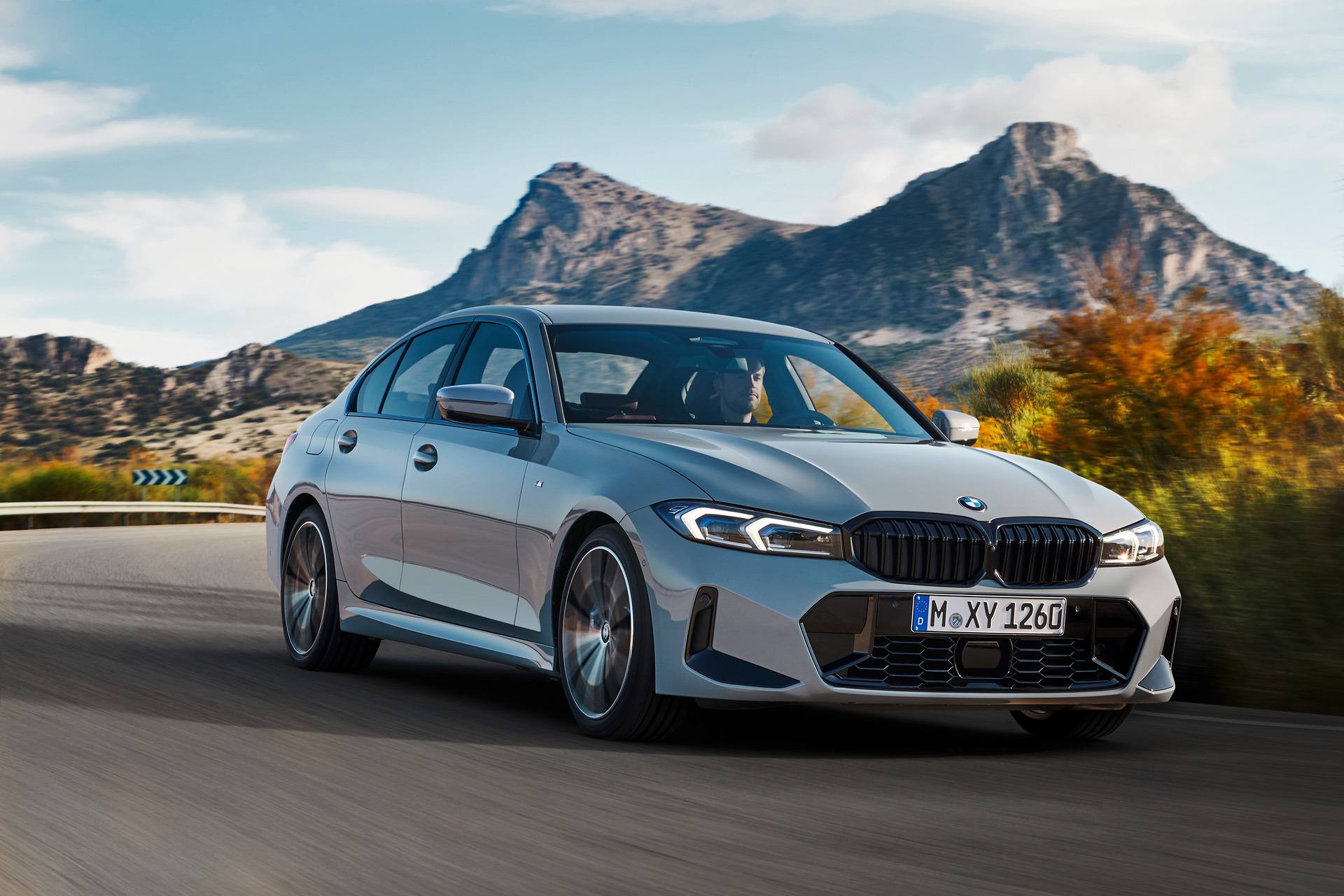
7. **BMW 7 Series (E65/E66 2002-2008)**The BMW 7 Series, particularly the E65 and E66 generations produced from 2002 to 2008, represented a bold leap forward in automotive luxury and technology. However, this ambition came with a significant caveat: a reputation for electrical problems that could make even the most dedicated BMW enthusiast wince. While these cars were undeniably opulent and offered a sublime driving experience, their cutting-edge electronics often proved to be their Achilles’ heel, transforming sophisticated features into sources of significant frustration.
BMW’s aggressive integration of advanced electronics, including the revolutionary iDrive infotainment system, adaptive lighting, and a dizzying array of control modules, was truly groundbreaking for its time. Yet, the rapid pace of this technological rollout, it seems, came at the expense of long-term reliability. Owners frequently reported a multitude of failures in the Electronic Control Units (ECUs), leading to a range of symptoms from erratic instrument clusters to unresponsive climate controls and recalcitrant door locks.
The fundamental issue often traced back to wiring harness degradation, where insulation would become brittle over time and connectors would succumb to corrosion. These are precisely the kind of issues that turn diagnostics into a forensic investigation, particularly when compounded by the sheer complexity of the car’s electrical architecture. Interruptions or faults within the car’s intricate CAN bus system—the digital communication network—were especially problematic, triggering random warning lights and unexpectedly disabling various interconnected systems.
The electrical gremlins in the E65/E66 models have, regrettably, cemented a reputation for unpredictability and eye-watering maintenance costs within the automotive community. While the allure of BMW’s driving dynamics and luxurious appointments often maintained owner loyalty, any potential buyer of these models absolutely needs to be prepared for the very real possibility of substantial electrical headaches. Repair costs, driven by expensive OEM parts and specialized diagnostic procedures, can quickly eclipse the initial purchase price.
These vehicles serve as a cautionary tale: while innovation is vital, it must be underpinned by uncompromising reliability. The E65/E66 demonstrated that even premium brands could stumble when pushing the technological envelope without fully fortifying the foundational electrical systems. So, if you’re tempted by the depreciated luxury of an E65/E66, budget generously for the inevitable electrical exorcism it might require.
Car Model Information: 2019 Lexus GX 460 Premium
Name: BMW 7 Series
Caption: BMW 7 Series (G11)
Manufacturer: BMW
Production: 1977–present
Class: Full-size car,luxury car
BodyStyle: sedan (car)
Predecessor: BMW New Six
Categories: All articles with dead external links, Articles with dead external links from July 2021, Articles with short description, BMW vehicle series, CS1 Chinese-language sources (zh)
Summary: The BMW 7 Series is a full-size luxury sedan manufactured and marketed by the German automaker BMW since 1977. It is the successor to the BMW E3 “New Six” sedan and is now in its seventh generation.
The 7 Series is BMW’s flagship car and is only available in a sedan bodystyle (including long wheelbase and limousine models). It traditionally introduces technologies and exterior design themes before other models in BMW’s lineup.
The first generation of the 7 Series was powered by straight-6 petrol engines, and following generations have been powered by inline-4, straight-6, V8 and V12 engines with both natural aspiration and turbocharging. Since 1995, diesel engines have been optional in the 7 Series.
Unlike the BMW 3 Series and BMW 5 Series sedans, BMW does not offer a full M model, but once offered an M performance variant, the BMW M760 with its 6.6L V12 (at the time the most powerful BMW ever made, not to be confused with BMW 760 6.6 V12 which does not offer the same performance). The Alpina B7 served as the high-performance variant of the 7 Series.
Get more information about: BMW 7 Series
Buying a high-performing used car >>>
Brand: BMW Model: 7 Series
Price: $30,991 Mileage: 72,932 mi.

8. **Volkswagen Passat (Early 2000s Models)**For many, the Volkswagen Passat of the early 2000s (think B5 and B5.5 generations) offered a compelling blend of European driving dynamics, a touch of understated style, and a perception of quality. However, beneath that appealing façade lurked a host of electrical gremlins that often left owners questioning their choices. These weren’t always catastrophic failures, but rather a persistent collection of nagging issues that could chip away at owner satisfaction and make reliable daily driving a more elusive dream than it should have been.
The common complaints were numerous and varied. Owners frequently reported malfunctioning power windows that would inexplicably stop working or refuse to roll up, intermittent dashboard warning lights that played a cruel game of hide-and-seek, and frustrating failures within the central locking system. Digging deeper, these problems often pointed to several key culprits: flawed wiring harness designs, a susceptibility to connector corrosion, and, regrettably, certain problematic control modules that seemed prone to early retirement.
One particularly notorious trouble spot was the Passat’s electrical control unit itself, which was known to suffer from solder joint failures and software glitches. This seemingly innocuous component could lead to a bewildering loss of communication with other critical systems like the ABS, airbags, and even the engine control unit. The result? A Christmas tree of warning lights on the dash and, in some cases, compromised vehicle safety. Furthermore, the design of the door wiring was often inadequate, allowing moisture ingress that led to short circuits, particularly impacting window regulators and mirror adjustments.
The confluence of complex electrical systems, which Volkswagen was increasingly adopting during this era, and what some have described as cost-cutting measures in material quality, unfortunately conspired to create a fertile breeding ground for these recurrent and deeply frustrating faults. Repairs often proved labor-intensive, demanding extensive diagnostic work to pinpoint the root cause of intermittent issues. This combination of high repair cost and complexity undoubtedly contributed to lower owner satisfaction and, predictably, diminished resale values for these specific Passat generations.
While modern Passats have largely moved past these particular woes, the early 2000s models serve as a potent reminder that even well-regarded brands can have their moments of electrical vulnerability. If you’re eyeing one of these older models, a thorough pre-purchase inspection that specifically targets known electrical weaknesses is a shrewd move to avoid inheriting a rolling puzzle of wiring problems.
Car Model Information: 2014 Volkswagen Passat 1.8T Auto SE w/Sunroof & Nav
Name: Volkswagen Passat
Caption: Passat B9
Manufacturer: Volkswagen
Aka: Volkswagen Dasher,Volkswagen Quantum,Volkswagen Santana,Volkswagen Corsar,Volkswagen Magotan (China),Volkswagen Carat
Production: 1973–present
Class: Mid-size car
Layout: Front-engine, front-wheel-drive layout
Predecessor: Volkswagen Type 4,Volkswagen Type 3,Volkswagen K70
Successor: Volkswagen ID.7
Sp: uk
Categories: 1970s cars, 1980s cars, 1990s cars, 2000s cars, 2010s cars
Summary: The Volkswagen Passat is a nameplate of large family cars (D-segment) manufactured and marketed by the German automobile manufacturer Volkswagen since 1973 and also marketed variously as the Dasher, Santana, Quantum, Magotan, Corsar and Carat — in saloon, estate, and hatchback body styles.
A “four-door coupé” variant of the Passat with a lower roof was released in the North American market in 2008 as the Passat CC, which was then renamed to Volkswagen CC. The CC was succeeded by the Arteon in 2017.
In January 2011, Volkswagen introduced a separate Passat model line, internally designated “Volkswagen New Midsize Sedan” or NMS, that was manufactured in the US at the Chattanooga assembly plant and in China at Nanjing by SAIC-Volkswagen. Developed to increase Volkswagen sales in North America, the Passat NMS is larger and costs less to produce, and is sold in the North America, South Korea, China, and Middle East. The separate B8 Passat model entered production, based on the MQB platform.
In 2019, the Passat NMS program was split into two as the North American one continued being produced on an older platform while the Chinese Passat moved on to the MQB platform, which resulted in Volkswagen marketing three models under the Passat nameplate globally at that time. The North American Passat was discontinued after the 2022 model year.
Volkswagen ended the production of the saloon Passat for the European market in 2022. The B9 Passat, released in 2023, is only available in an estate body style. The Passat continues to be available as a saloon in China.
The “Passat” is one of several Volkswagen models named after a wind: “Passat” is the usual German word for “Trade winds”.
Get more information about: Volkswagen Passat
Buying a high-performing used car >>>
Brand: Volkswagen Model: Passat
Price: $7,500 Mileage: 107,908 mi.
Read more about: The Fading Glory: 10 Sedans That Ruled the Road Before Losing Their Stride in a Shifting Market
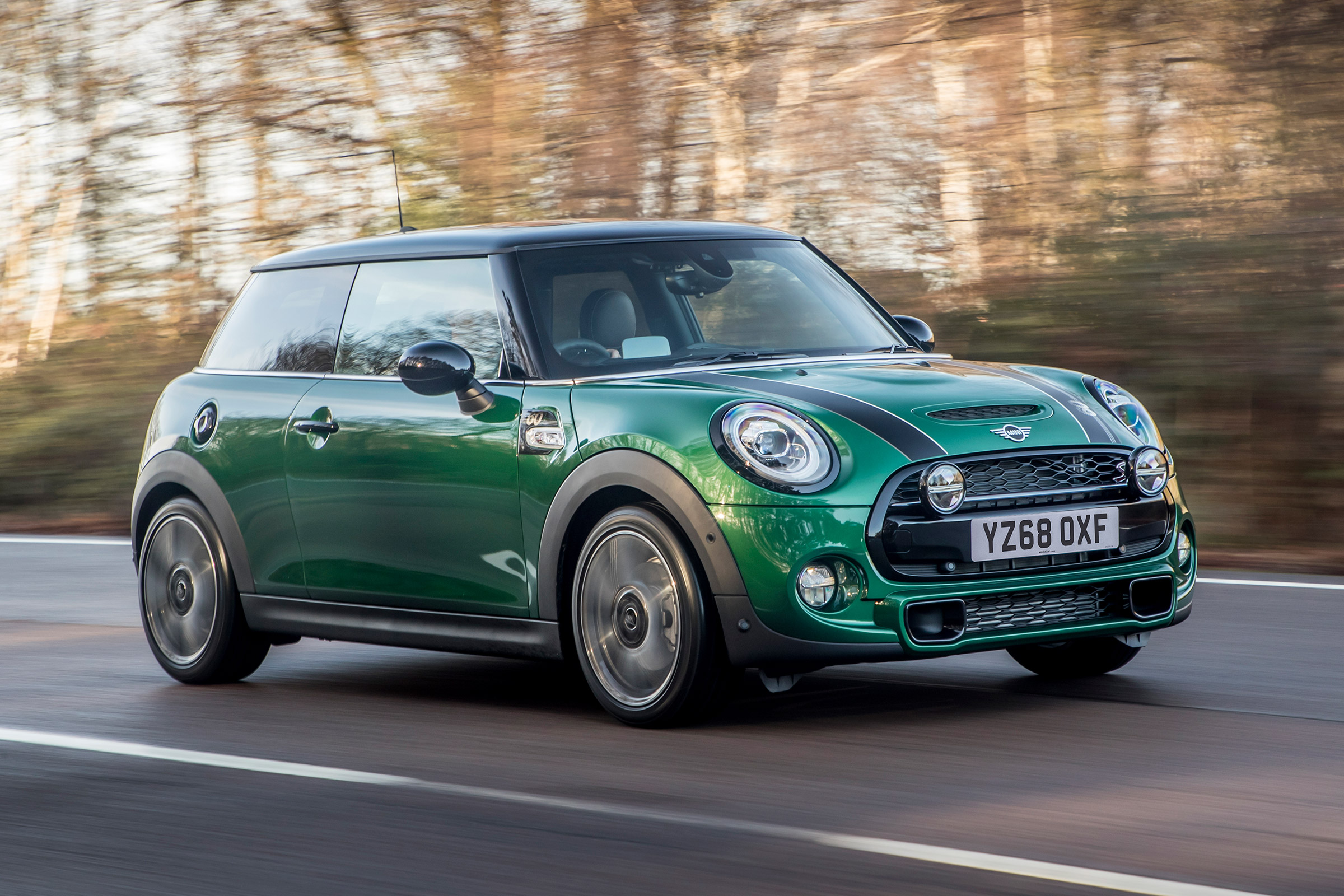
9. **Mini Cooper (First Generation R50/R53, Early 2000s)**Ah, the first-generation Mini Cooper (R50/R53), produced in the early 2000s! A car celebrated for its cheeky personality, go-kart handling, and undeniable charm. It burst onto the scene with a fresh take on an icon, captivating drivers with its spirited nature. Yet, beneath that delightful exterior, many owners discovered a less endearing trait: a penchant for electrical systems that could be as temperamental as a toddler on a sugar crash. These electrical gremlins, unfortunately, often overshadowed the sheer joy of driving this compact marvel.
The list of electrical frustrations for early Mini owners was, shall we say, comprehensive. Common reports included instrument clusters that would flicker or entirely cease functioning, faulty ignition switches that could lead to intermittent power loss or even unexpected engine stalls, and a central locking system that occasionally decided to go on strike. These weren’t isolated incidents; they were systemic issues that chipped away at the car’s otherwise engaging ownership experience, proving that sometimes, even iconic design can’t ward off digital demons.
Delving into the root causes reveals a few consistent culprits. Poorly routed wiring harnesses were a frequent offender, leaving critical wires vulnerable to chafing and damage from everyday vibrations and movements. Compounding this, subpar connector designs were often inadequate at preventing moisture ingress and subsequent corrosion, creating weak points throughout the electrical network. The ignition switch, in particular, earned a reputation as a major point of failure, directly leading to frustrating power interruptions.
Adding to the complexity, the early Mini employed an intricate network of control modules, a relatively new frontier for compact cars at the time. When these modules experienced communication errors, it could trigger a bewildering array of erratic warning lights and a sudden loss of various functionalities, transforming a fun drive into a head-scratching diagnostic session. Because of these widespread issues, first-generation Minis often demanded vigilant maintenance and, quite often, costly electrical repairs that few owners anticipated when falling for its charm.
While subsequent Mini generations have largely ironed out these specific electrical kinks, the R50/R53 models remain a vivid illustration of the challenges involved in integrating complex modern electronics into a compact, characterful vehicle. For those drawn to the undeniable appeal of a first-gen Mini, be prepared for potential electrical battles and factor in a robust budget for specialized diagnostics and potential component replacements.
Car Model Information: 2013 MINI Coupe Cooper S
Sp: uk
Caption: 1959 Morris Mini-Minor (first one built)
Name: Mini
Aka: Austin 850,Rover Mini,Austin Cooper,Austin Mini,Austin Partner,Austin Seven,Innocenti Mini,Leyland Mini,Morris 850,Morris Mascot,Morris Mini Minor,Riley Elf,Wolseley 1000 (South Africa),Wolseley Hornet
Layout: Front-engine, front-wheel-drive layout
Manufacturer: British Motor Corporation,British Leyland,Rover Group
Production: 1959–2000 (5.38 million)
Class: City car
BodyStyle: sedan (car),convertible,Station wagon,sedan delivery,coupe utility
Engine: BMC A-series engine,Straight-four engine
Designer: Alec Issigonis,John Sheppard (car designer)
Transmission: 4-speed manual,AP automatic transmission,5-speed manual (optional extra on some later models)
Length: cvt,cvt,cvt
Width: cvt
Height: cvt
Weight: cvt
Wheelbase: cvt,cvt
Related: Mini Moke,Austin Metro,Innocenti Mini,Mini Wildgoose,Mini Marcos
Successor: Austin Metro,Mini Hatch
Assembly: Panmure, New Zealand
Categories: 1960s cars, 1970s cars, 1980s cars, 1990s cars, 2000s cars
Summary: The Mini is a very small two-door, four-seat car, produced for four decades over a single generation, with many names and variants, by the British Motor Corporation (BMC) and its successors British Leyland and the Rover Group, and finally (briefly) under BMW ownership. Minis were built as fastbacks, estates, convertibles, and various other body styles. Minus a brief 1990s hiatus, from 1959 into 2000, an estimated 5.38 million of all variations combined were built, and the Mini’s engines also powered another 2 million Mini Metros, though the Mini eventually outlasted its successor.
Initially, the Mini was marketed under the Austin and Morris names, as the Austin Seven and Morris Mini-Minor; the Austin Seven was renamed Austin Mini in 1962 and Mini became a marque in its own right in 1969. Retrospectively, the car is known as the “Classic Mini” to distinguish it from the modern MINI family of vehicles produced since 2001 by German carmaker BMW, who took ownership of the Mini name following the sale of Rover Group in 2000.
This distinctive two-door car was designed for BMC by Sir Alec Issigonis. Its space-saving transverse engine and front-wheel drive layout – allowing 80% of the area of the car’s floorpan to be used for passengers and luggage – influenced a generation of car makers. The front-wheel-drive, transverse-engine layout were used in many other “supermini” style car designs such as Honda N360 (1967), Nissan Cherry (1970), and Fiat 127 (1971). The layout was also adapted for larger subcompact designs. In 1999, the Mini was voted the second-most influential car of the 20th century, behind the Ford Model T, and ahead of the Citroën DS and Volkswagen Beetle. It is also considered an icon of 1960s British popular culture.
The Mini Mark I had three major UK updates: the Mark II, the Clubman, and the Mark III. Within these was a series of variations, including an estate car, a pick-up, a van, and the Mini Moke, a jeep-like buggy. The performance versions, the Mini Cooper and Cooper “S”, were successful as both race and rally cars, winning the Monte Carlo Rally in 1964, 1965, and 1967. The Mini was manufactured in England at the Longbridge plant in Birmingham located next to BMC’s headquarters and at the former Morris Motors plant at Cowley, as well as in Australia (Victoria Park/Zetland BMC Australia factory) and later also in Spain (Authi), Belgium, Italy (Innocenti, as the Innocenti Mini), Chile, Malta, Portugal, South Africa, Uruguay, Venezuela, and Yugoslavia (IMV). In 1980, British Leyland launched the Mini’s follow-up, the Austin Metro, however the Mini outlasted it and continued to be produced at Longbridge until October 2000.
Get more information about: Mini
Buying a high-performing used car >>>
Brand: Mini Model: Cooper
Price: $11,875 Mileage: 78,956 mi.

10. **Chevrolet Silverado (Early to Mid-2000s Models)**The Chevrolet Silverado, particularly the models from the early to mid-2000s, stands as a testament to American ruggedness and undeniable capability. These trucks were (and still are) workhorses, built to tackle tough jobs and haul heavy loads. However, even a vehicle as inherently robust as a Silverado wasn’t immune to the creeping curse of electrical gremlins, which, for certain generations, managed to tarnish an otherwise solid reputation. For owners who relied on their trucks day in and day out, these electrical quirks were more than an annoyance—they were a genuine impediment to productivity.
Owners of these Silverado models frequently reported a troubling array of electrical issues. Erratic dashboard gauges were a common complaint, with needles flickering or simply dead. Faulty power accessories, such as windows, mirrors, or radio functions, would act unpredictably. Perhaps most vexing were the persistent ‘check engine’ lights, often triggered not by a mechanical fault, but by an underlying electrical glitch that was notoriously difficult to pinpoint and rectify. It was a digital ghost in the machine, haunting many a proud truck owner.
Upon closer inspection, the Silverado’s wiring harnesses from these years often revealed a few critical shortcomings. Inadequate insulation quality and insufficient protection against moisture and constant vibration were key contributors. These design flaws led directly to problems like corrosion at critical connector terminals and intermittent shorts, which could, in turn, cause erratic sensor readings and those frustrating false warning alerts. Issues with the vehicle’s body control module (BCM) and engine control unit (ECU) were also commonly cited as sources of electrical misery, proving that even heavy-duty trucks had a soft spot for digital drama.
Attempting to repair these widespread electrical gremlins often became a challenging and time-consuming endeavor. The complex, networked systems within the Silverado meant that faults could propagate, making it difficult to isolate the true source of a problem. Technicians frequently found themselves testing multiple modules and sensors, sometimes needing to replace several components before a lasting fix could be achieved. This complexity and the associated high labor and parts costs led to understandable frustration among owners and repair shops alike, adding an unexpected financial burden to truck ownership.
While more recent Silverado models have shown marked improvements in electrical reliability, the early to mid-2000s trucks serve as a potent reminder that even a beloved, durable workhorse can be undermined by electrical shortcomings. Prospective buyers considering these older models would be wise to perform a meticulous pre-purchase inspection, particularly focusing on the electrical system, and be prepared for the potential for ongoing electrical maintenance. After all, a dependable truck is one that doesn’t leave you guessing about its vital signs.
The journey through the intricate world of automotive electrical systems reveals a compelling narrative of innovation, engineering prowess, and, at times, frustrating missteps. We’ve seen how brands like Toyota and Honda meticulously craft ‘bulletproof’ architectures that stand the test of time, providing owners with peace of mind through thoughtful design, rigorous testing, and an unwavering commitment to quality. Their success stories underscore the profound impact that a robust electrical foundation has on a vehicle’s long-term reliability and the overall ownership experience.
Conversely, our exploration of models like the early 2000s Jeep Grand Cherokee, BMW 7 Series (E65/E66), Volkswagen Passat, first-generation Mini Cooper, and early-to-mid-2000s Chevrolet Silverado offers a stark counterpoint. These vehicles, while often desirable for other qualities, became cautionary tales of how ambitious technological integration, coupled with design flaws or insufficient protection, can lead to a relentless battle against electrical gremlins. They remind us that complexity, without corresponding reliability, can quickly erode consumer trust and significantly inflate maintenance costs.
Car Model Information: 2025 Chevrolet Silverado 1500 LT
Name: Chevrolet Silverado/GMC Sierra
Caption: 2022 Silverado 2500HD High Country
Manufacturer: General Motors
Aka: unbulleted list
Production: 1998–present
Assembly: unbulleted list
Class: unbulleted list
BodyStyle: unbulleted list
Layout: unbulleted list
Predecessor: unbulleted list
Categories: 2000s cars, 2010s cars, 2020s cars, All-wheel-drive vehicles, All Wikipedia articles written in American English
Summary: The Chevrolet Silverado is a range of trucks manufactured by General Motors under the Chevrolet brand. Introduced for the 1999 model year, the Silverado is the successor to the long-running Chevrolet C/K model line. Taking its name from the top trim level from the Chevrolet C/K series, the Silverado is offered as a series of full-size pickup trucks, chassis cab trucks, and medium-duty trucks. The fourth generation of the model line was introduced for the 2019 model year.
The Chevrolet Silverado shares mechanical commonality with the identically related GMC Sierra; GMC ended the use of the C/K nomenclature a model generation prior to Chevrolet. In Mexico, high-trim level versions of the Silverado use the Chevrolet Cheyenne name (not to be confused with the 2003 concept). Competing against the Ford F-Series, Ram pickup, Toyota Tundra, and Nissan Titan, the Silverado is among the best-selling vehicles in the United States, having sold over 12 million trucks since its introduction in 1998 as a 1999 model year.
Get more information about: Chevrolet Silverado
Buying a high-performing used car >>>
Brand: Chevrolet Model: Silverado
Price: $50,977 Mileage: 14,673 mi.
Read more about: Still Running Strong: 14 Legendary Vehicles That Exceed 300,000 Miles
Ultimately, whether you’re a seasoned gearhead or a casual commuter, understanding a vehicle’s electrical pedigree is no longer a niche concern; it’s a fundamental aspect of smart car ownership. As vehicles continue their evolution into sophisticated, connected machines, the importance of a resilient electrical system will only grow. By learning from both the triumphs and tribulations detailed here, consumers can make more informed decisions, sidestepping potential headaches and ensuring that their chosen ride remains a steadfast, electrically sound companion for all the miles ahead. The silent battlefield of wires and sensors may be unseen, but its impact on your driving life is undeniably profound. Always choose wisely.

